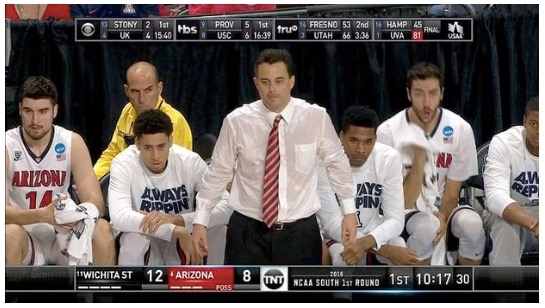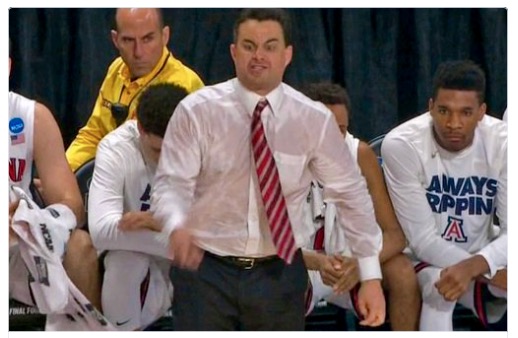A fitting postscript to my last post.

Are the kids playing or the coach?


A fitting postscript to my last post.

Are the kids playing or the coach?


Is there a more dramatic explanation for why this season’s rule changes – while steps in the right direction – were insufficient to reverse the decline in pace and scoring in any significant way?
I don’t mean the embarrassed looking Hall of Famer and coaching extraordinaire Mike Krzyzewski during last season’s Final Four but the stool on which he’s perched and what it represents: the ascent of the coach from the bench to the court, the shift from coach as teacher to coach as participant.
In effect, today’s game is presented as strange theatrical production in which the director shares equal stature with the performers. He’s on the stage with them, shouting instructions and modifying the script as the play unfolds, and in the process, leaving little room for the actors to actually act. That’s what we have in college basketball today.
The coaches are smothering the game.
Continue reading…So far, so good.
The twenty-five rule changes implemented this season – especially those intended to increase pace and enhance “freedom of movement” – seem to be working. We ended last season with only five teams averaging 80 or more points per game, none scoring more than 85. By mid-December this season, seventy teams were averaging 80 or more, seven of them in the 90’s.
Still, I have my doubts. You don’t reverse a forty-year decline in one season.
Just how deep is the hole we’ve dug? Continue reading…
During the last couple of weeks, in response to a series of posts on the decline of scoring in college basketball and my attempt to trace the reasons for this disturbing trend by probing Austin Carr’s record-setting performance in the early 1970’s, several readers have requested information on the Stack or Isolation Offense. Over the weekend I was flattered to hear from basketball aficionado, Herb Welling.
Coach Welling, as you may know, has been called the “minister of information” in coaching circles and has been featured several times in the media, most prominently in Grant Wahl’s 2008 Sports Illustrated article on the evolution of the Dribble Drive Motion offense.
Herb first became acquainted with betterthanalayup.com when researching the matching zone defense and discovered my piece on coach Gene Sullivan’s strategy. In recent days we’ve shared several emails and phone calls, discussing the origins of Sullivan’s equally interesting Stack offense.
I promised him that I would provide a deeper dive into the subject and am pleased to offer it now in a “quick and dirty,” Q & A format. In the future I’ll post a more comprehensive and polished essay.
In the meantime, I hope this initial piece proves helpful and prompts further questions and commentary.
Click here to read Stack Offense Q & A
Let’s go back.
In fact, let’s go back forty-five years to an era of college basketball retired sports columnist Mike Loprestti fondly remembers.
“There was no shot clock, no three-pointers and no complaints about lack of scoring. Jacksonville put up 109, 104, 106, and 91 points on its way to the 1970 championship game that it lost to UCLA. Who knew that the more they put in rules friendly to the offense, the lower the scores would go?”
That same year I sat on the Notre Dame bench as the Irish student trainer and witnessed first-hand that historic tournament game I referenced in my last post. The one in which Austin Carr set the single-game tournament scoring record, garnering 61 points against Ohio University in the first round of the 1969-70 tournament.
Today, captured on ancient video tape, the game is not only great fun to watch but is of historic interest as it marks the beginning of the end of one era in college basketball and the launching of the one we now experience. In many ways, it foreshadows what the game was to become and how it began to deteriorate even as it grew in popularity driven by 24/7 cable coverage and the explosion of March Madness. Here’s a quick rundown of what the game tape reveals: Continue reading…